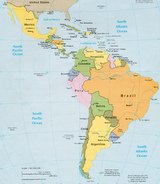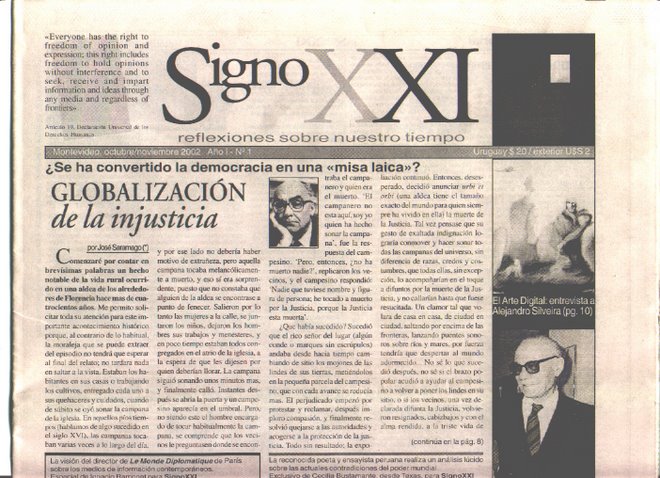
Michael Pettis
According to Friday’s China Daily (and a host of other newspapers around the world), a just published Gallup survey claims that most Americans think China will be the world’s largest economy within 20 years. We obviously need to take these opinions with a grain of salt since, according to the same survey, 40% of Americans believe the China is today the world’s top economy, compared to 33% who believe it is the US. Since the US economy is currently more than four times the size of China’s, it is a little hard to understand why 40% of Americans think China’s is the world’s largest, but there you have it.
I suppose it is the combination of China hype and US paranoia that explains these bizarre opinions. To their credit, it doesn’t seem that informed opinion in China takes the results of this survey very seriously. The China Daily article pointed out that Chinese experts are a lot less confident about the validity of these predictions than their American counterparts, and I suspect they are right.
Perhaps this Chinese skepticism is because Americans have made similar predictions before, and these predictions turned out to be absurd. It was well known in the late 1950s that thanks to their superior technology and better economic management the Soviet Union was all but certain to overtake the US economically before the end of the 20th Century. That didn’t pan out, of course, but without missing a beat Americans then switched their focus to Germany, whose inexorable rise as a quality-oriented export machine in the 1960s and 1970s made it seem that it was just a matter of time before it did the trick (in the 1930s they were also supposed to overtake the US at some not-too-distant time, but that didn’t pan out either). By the mid 1980s all other contenders were chucked into the waste bin when it seemed breathtakingly obvious that the Japanese juggernaut was the one that would crush everyone before it. Now, apparently, it is the turn of China.
I don’t want to make too much fun of US paranoia. Americans are intensely competitive and we seem to need a serious challenger to justify ourselves existentially. Perhaps that is part of our strength. On the other hand, as I’ve seen printed on numerous t-shirts, “Just because I am paranoid doesn’t mean they aren’t out to get me.” So is the paranoia justified?
I pulled out my trusty calculator to see what it would take for China’s GDP to overtake that of the US by 2028. If we assume that China grows by 10% a year for the next few decades years, and that the US grows by 2% a year during that same period, the mathematical conclusion is inescapable: the Chinese economy will equal that of the US in twenty years and will be nearly six times as big by the middle of the century.
But how likely is this? In my opinion it is extremely implausible. First, US GDP growth is much more likely to average 2.5-30% a year, as it has for much of its recent history. Second the idea that China can grow at 10% on average for the foreseeable future is, to put it charitably, a little unlikely.
Why is it unlikely? Since it began its reforms in the mid-1970s, China’s economy has in fact grown at roughly 10% a year, and participants in the earlier “Asian miracle” were also able to achieve similar levels of growth for many years, so why is it so hard to think that this growth level cannot continue for China into the indefinite future?
Let us leave aside the statistical observation that it is far more likely for smaller countries to end up in the “tails” of a probability forecast than for a country as large as China – in other words for purely statistical reasons small countries are more likely to be on the very high or very low end of a standard distribution of outcomes than are large countries. This observation, by the way, dovetails nicely with the actual range of historical growth rates in Asia, where smaller countries have been both the best and the worst performers. There are still at least three other sets of reasons why this 10% forecast is unlikely and why we need to adjust these numbers sharply downwards.
Special circumstance
The first set of reasons involves the special circumstances that have so far underpinned China’s recent growth and its sustainability, the second has to do with demographics, and the third has to do with a few obvious emerging problems facing China’s economy as it continues to grow. To address the first set of reasons, Chinese growth since the 1970s, as I see it, was powered by three special circumstances, none of which are sustainable over the long or even medium term. The first special circumstance occurred in the early stages of China’s reform, when Deng Xiaoping began to unshackle the Chinese economy in the late 1970s. As is widely known, many of his immensely successful government reforms consisted simply of unwinding some of the policies of his predecessors – which were among the most inefficient economic policies ever put into place.
Remember that in the 1930s, China’s per capita income was not much below that of Japan and Taiwan, and I believe it was higher than that of South Korea (although perhaps not of the more highly industrialized North Korea, which anyway put into place some of the same policies that China had before the Deng Xiaoping reforms, and suffered a similar fate). China’s per capita income at the time was also substantially higher than many of its Asian neighbors who subsequently undertook their own economic reforms, and who still far surpass China in GDP per capita. Under the economically repressive policies of its early leaders post-1949 China fell way behind its neighbors, and so it is no surprise that simply unwinding some of the policies that so sharply repressed Chinese economic growth would have created a massive growth spurt that would allow it to narrow the tremendous lead its neighbors had enjoyed. In a similar way I have little doubt that when North Korea finally begins its economic reforms, its growth rate will even surpass that of China as it too is able to take advantage of the reversal of economic repression.
China is still benefiting from unwinding of its failed economic experiment, but clearly as China advances it becomes harder and harder to sustain the growth differential simply by removing the earlier political impediments. Simply put, once all the worst policies of the 1950s, 1960s and 1970s are eliminated, there will be no more free lunch.
The second big cause of recent growth, in my opinion, was the tremendous fiscal expansion China underwent in the 1990s. It is hard to measure the extent of this expansion because it occurred almost entirely through a rapid expansion of bank lending to unprofitable state-owned enterprises, but it also left the banks saddled with enormous amounts of non-performing loans and it nearly crippled the banking system. This hidden fiscal expansion still occurs to some extent, but clearly there are very tight limits as to how much more expansion the government can engineer, and of course fiscal expansion is not a free lunch. It must be paid for in the future.
Finally, the third cause of extraordinary growth (and the period of most extraordinary growth) began roughly in 2003 or thereabouts, when China found itself locked into a monetary regime that resulted in out-of-control money expansion. China is still living with this monetary regime, and while the early stages of this kind of growth are always wonderful – asset price increases, plentiful credit, rapid growth – at some point the consequences, as we are already seeing, lead to significant economic imbalances and the need for adjustment. We may begin to see already in 2008 the process of this unwinding. At any rate, this latest phase of Chinese growth is also unsustainable, in my opinion (for reasons I have discussed many times in this blog).
The demographic crisis
So assuming that there are no special changes or challenges facing China, and assuming that absent these special circumstances things can continue as they have, what is a reasonable projected growth rate? I am not smart enough to say, but certainly I think we can say 10% annual growth for the medium- or long term horizon is at best the upper limit, not the expected mean. Let’s assume that if current circumstances remain in place and if we eliminate the special circumstances that underpinned the impressive growth rates of the last three decades, China can grow at an upper limit of 9-10%. I think this may be a little generous, but I want to be conservative as I work this number down.
That brings us to the second set of reasons why a 10% annual growth rate is unlikely for the future – the demographic challenge. During the period of Chinese growth since the late 1970s, China benefited from a double advantage. Not only was its population growing, albeit slowly, but more importantly, its dependency ratio improved dramatically (the dependency ratio is the percentage of non-workers – basically the too-old and the too-young – in the total population).
After the horrors and dislocations of the anti-Japanese war and the subsequent civil war, with the establishment of peace and the New China in 1949, the country not surprisingly enjoyed a baby boom. One consequence of the baby boom, of course, was deterioration in the dependency ratio, as an explosion of births meant that an increasing fraction of the population was too young to work. From 1949 to the mid-1970s China saw its dependency ratio rise (deteriorate) quickly.
This deterioration in the dependency ratio began to reverse itself in the 1970s as young people born in the 1950s and 1960s became old enough to join the work force, causing a surge in employable workers. With the implementation at that time of the one-child policy, the improvement in the dependency ratio accelerated sharply as China saw the number of children drop as a share of its population. The combination of the two factors was impressive. Thanks to the maturing baby-boomers and one-child policy, from the mid-1970s to the present China enjoyed one of the most dramatic improvements in the dependency ratio that the world has seen.
This had to come to an end, however, because fewer children today also means that in the future there will be fewer workers. Demographic experts project that China’s dependency ratio will continue improving for another two or three years, but after that it will begin to deteriorate almost as dramatically as it had previously improved (the baby boom moves into retirement but there are too few young adults to replace them). This deterioration will be exacerbated by the fact that China’s total population is at or near its peak, and will decline slowly over the next few decades.
How will this affect Chinese growth? It is of course hard to say, especially since the scale is unprecedented and we don’t have too many examples of similar circumstances with which to compare China, but economic growth is equal to the growth in the number of workers multiplied by the growth in productivity per worker. From the mid-1970s to now, my very rough back-of-the-envelope calculations suggest that China’s working population grew on average by about 2% to 2.5% a year. From 2010 to 2050 my equally rough calculations suggest that the working population will decline by around 1% annually.
That means that China will face roughly a 35 to 3.5% differential growth rate of workers between the last 30 years and the next 30 years. There are too many unpredictable factors that can result from this decline in workers, so it is dangerous to imply any precision at all in my predictions, but I would guess that a plausible, unbiased prediction would suggest that in order to account for this dramatic change in the growth rate of the working population, we should reduce the current “equilibrium” growth rate by 3.0-3.5%.
That takes us to projected growth rates of around no more than 6-7%, and perhaps less. This may seem like a very low number (and there are additional reasons to think it should be adjusted downward). Certainly it is well below what nearly every economist seems to be predicting for China, especially in light of the high and persistent growth rates enjoyed by other Asian countries, but it is not as crazy as it sounds. It is true that many Asian countries were able to generate growth rates at substantially higher levels for many years, but a significant part of that growth was also generated by improvements in the dependency ratio. I have seen one World Bank report that argues that as much as 30% of the Asian “miracle” can be explained by this factor alone, and of course Paul Krugman in his notorious Foreign Affairs article (in 1997, I think) argued that much of the rest of Asian “miracle” growth could be explained by other factor labor-growth-related inputs. As surprising as it may seem at first, it is not out unreasonable at all to assume that a sharp reduction in the growth rate of the working population must also result in a sharp reduction in output growth.
By the way demographic changes do not have the same adverse effect on the US because not only is the US population growing steadily during this whole period (from four times as big today, China’s population may be 2.5 to 3 times as big as the US by 2050), but its dependency ratio is more or less stable. US population is expected to grow at around 1% annually into the middle of the century, and its working population is expected to keep pace – and perhaps even grow a little faster as Americans are increasingly likely to work later years.
Emerging problems
These two sets of sets of reasons explain why I think a projected 10% annual growth rate into the medium term is very optimistic, but there is still a third set of reasons to doubt the optimists. China has many other, almost unimaginably tough problems that need to be addressed in order to maintain high growth rates, and by addressing these problems the “equilibrium” growth rates may, and probably will, decline. One of the most obvious is that Chinese growth has come at the expense of a very serious degradation of its environment. Chinese environmental problems are by now so well known that it is unnecessary to argue why this process isn’t sustainable in the long run or even in the medium run, but it is worth wondering what the growth consequences will be when Chinese businesses are no longer able to count on the free depletion of their natural endowment.
What do I mean by this? If I create $10 of economic value in my factory while destroying $2 of economic value by depleting my natural endowment, my real contribution to the economy should be measured as $8. However in recent years Chinese businesses have been able to ignore the $2 they have destroyed (polluting rivers, destroying agricultural land, etc.) and have claimed the full $10 as economic value-added. This can’t go on for ever, and once these businesses are forced to recognize and pay for the $2 of damage, their contribution to economic growth per equivalent unit of activity will decline. This must show up as slower GDP growth (and I am not including the cost of reversing the previous environmental degradation).
I have no idea what the net effect will be, but I have heard estimates of the annual cost of environmental degradation ranging from 1% to 3% of GDP. Let’s say that these numbers are exaggerated, and that there are also secondary GDP benefits to environmentalism, perhaps it is still reasonable to shave 0.5% to 1% off GDP growth projections.
There is more. China has a severe water shortage – it is so bad that many water experts refer to a looming water crisis in the next decade. I am not enough a good enough economist or engineer to figure out the economic impact, but it can’t be controversial to suggest that the need to resolve the water crisis will somehow constrain economic growth. This constraint may be very significant, especially in the north where the water crisis is most severe.
Similarly with other commodities. For China to catch up to the US in total size by 2050, Chinese per capita income in 2050 must equal or exceed US per capita income today (I explained why in an entry last month). It is hard to imagine that if 20-25% of the world population move from the poverty of China today to the consumption level of the US today, the demands on the world’s resources won’t be strained somewhat. This will undoubtedly have a cost to GDP growth. By the way, one measure of how implausible the idea that China’s GDP will equal that of the US by 2050 is precisely that it would require Chinese per capital income in 2050 to be equal to or more than US per capita income today. Anyone who has traveled though China will find that a little hard to imagine.
But wait, since constraints on the world’s resources are a global problem, and not a Chinese problem, won’t that also constrain US growth? Almost certainly yes, but it seems pretty safe to say that the world’s wealthier, more flexible economies generally suffer less from high commodity prices and commodity shortages than the poorer countries, so the cost will be borne disproportionately by China and other poor countries.
I am ignoring in my calculations the possibility of serious social or political disruptions because these possibilities don’t necessarily change the expected outcome – they simply reduce the certainty we associate with those expectations. The most obvious uncertainty is political. Given the rapid social change China is undergoing (probably unprecedented in history in its magnitude) and the rigidity of its political structure, it is very hard to make a meaningful prediction about how the political system will react to the tremendous pressure China faces. Still, it is at least as plausible to argue that there will be occasions of difficult change and adjustment, and that these periods may have adverse economic impacts, as it is to argue that the process will be smooth and uneventful. This means that whatever the expected outcome, we would have to assign a much wider standard deviation than we might have for predictions about other countries.
I could go on, but I will make one final point. It is fairly well accepted among economists that rapid growth is easier for countries that are further behind technologically than the leaders, but as these countries advance the speed of the catch-up declines. This will probably happen to China too.
When will China overtake the US?
So where does that leave us? It is hard to say. These projections are necessarily imprecise and the mathematician in me insists that false precision is a great as sin as bad math, so I don’t want to refine the numbers too much. In the end I have no idea what a reasonable projected growth rate for China is for the next few decades, but I am very certain that 10% is implausible – almost impossible. I would suggest that anywhere between 5-7% is far more likely, and even lower numbers are not implausible. As you can see if you have been following the math, I am actually marking down my projection by a lot less than my arguments above would indicate because, like anyone else, it is not easy for me to want to vary too widely from the consensus. You can just write it off to my cowardice and inability to trust my own arguments.
At any rate if I reprogram these new set of numbers into my calculator, I show the following:
1. If we assume that the US grows at 2% a year forever, and that China grows at either 5% or 7% forever, in the first case China will be two-thirds the size of the US by the year 2050 and in the second it will be one-and-a-half times the size of the US by 2050.
2. If we assume the US grows by 2.5% forever, in the first case China will be little more than half the size of the US by 2050 and in the second case it will be 40% bigger.
3. If we assume the US grows by 3% forever, in the first case China will be little less than half the size of the US by 2050 and in the second case it will be 10% bigger.
4. Even in the most favorable relative case for China, China will be less than half the size of the US in 20 years. My guess is that this calculation distorts the likely outcome a little because whatever the average growth rate for China over the next forty years, it is likely to be higher in the first twenty than in the second (for many of the same reasons I downgraded the forecast). Still, it is in my opinion extremely unlikely that China will overtake the US in size within 20 years.
The world seems fervently to believe that China’s rise as the world’s largest economy is more or less a done deal even though it is hard to get the numbers necessary for such an outcome to work. China is clearly a large and growing economy, and there is little doubt in my mind that it will soon be the world’s second most important economy. There is even a possibility that it will be the world’s largest economy within our lifetimes, but that possibility is no certainty and, in my opinion, is not even highly likely. Perhaps paranoia just sells better.
-------------------------------------------------
Ir al Sitio principal Escritos críticos / Ensayos
www.majfud.50megs.com
Reflexiones sobre nuestro tiempo
-------------------------------------------------




No hay comentarios.:
Publicar un comentario